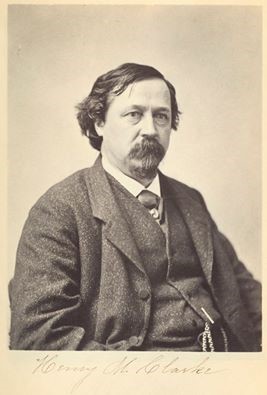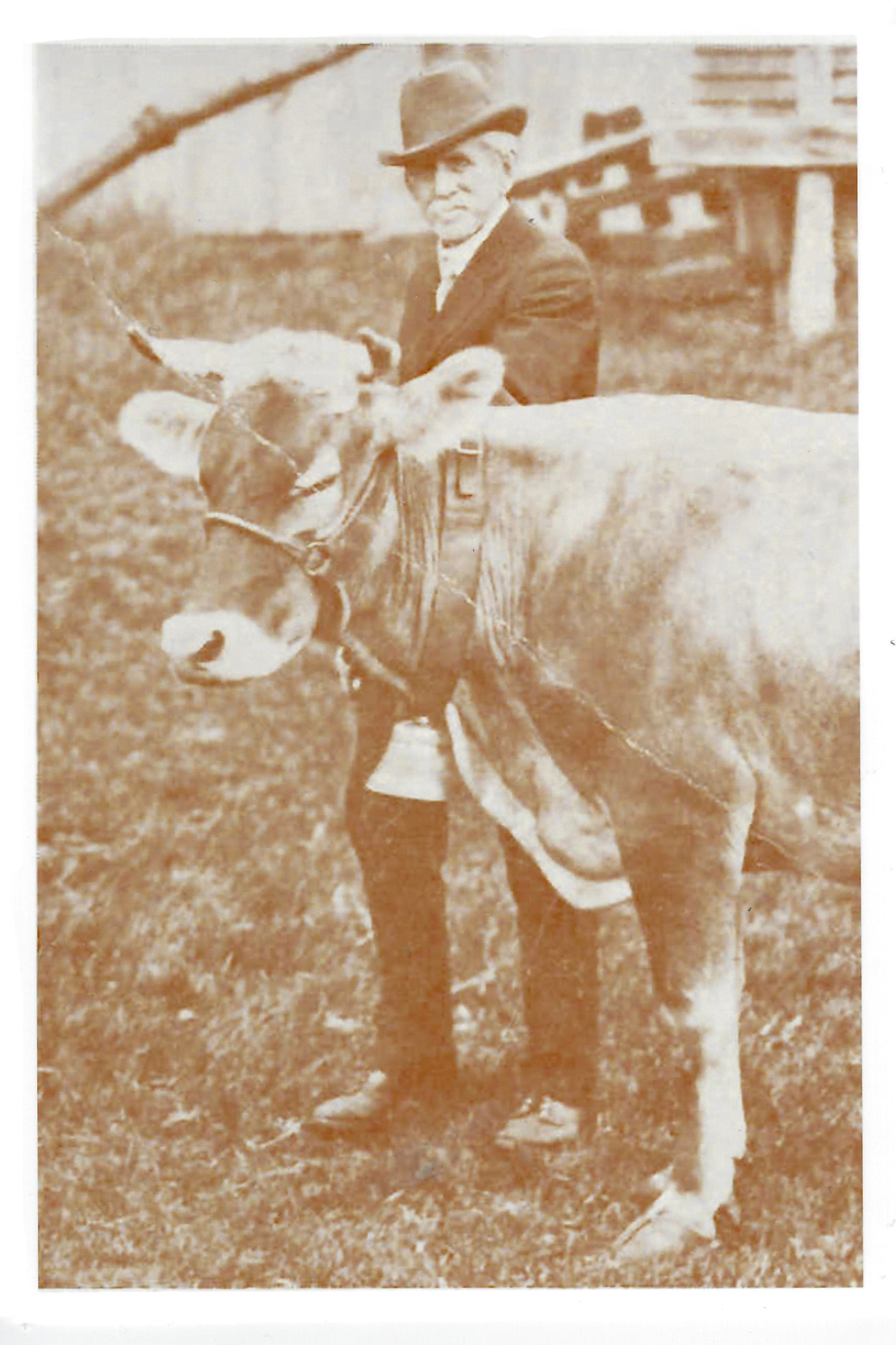2021 Hall of Fame
Henry Martyn Clarke (1826-1898), Belmont, Massachusetts -- Pioneer Award
 Henry M. Clarke was an industrialist as a paper manufacturer as well as a hobby farmer. The company’s warehouses were located in Boston, which were lost during the great fire of Boston in 1872. In early 1867 Clarke started to develop an estate in Cambridge to showcase dairy cattle. He is credited with having built the costliest barn of its time in New England. He also had several farms around the Belmont area where he owned Jerseys and Shorthorns.
Henry M. Clarke was an industrialist as a paper manufacturer as well as a hobby farmer. The company’s warehouses were located in Boston, which were lost during the great fire of Boston in 1872. In early 1867 Clarke started to develop an estate in Cambridge to showcase dairy cattle. He is credited with having built the costliest barn of its time in New England. He also had several farms around the Belmont area where he owned Jerseys and Shorthorns.
In 1869 Clarke was traveling to Switzerland and took a shine to the brown cattle that dotted the hillsides of central Switzerland. In September of 1869 while still in Switzerland, he purchased 7 females and one bull, from G. Burgi of Arth in the canton Schwyz. Those animals were, the bull Willian Tell 1, and females Zurich 1; Lucerne 2; Gretchen 3; Brinlie 4; Lissa 5; Christine 6; and Geneva 7. At least two of those females, Zurich and Brinlie, were carrying calves with resulting births once in the US of Albert Tell 2 and Verona 8. Thus, Mr. Clarke became the first person to import Brown Swiss cattle to the United States.
Clark became ill in 1871 and eventually became an invalid. He held an auction sale on May 15, 1873. At this sale Mr. David G. Aldrich of Auburn, MA was the largest single buyer taking 8 of the 13 head of Brown Swiss offered at auction. Mr. Clarke kept 7 heifers and one bull, but soon realized it was impossible for him continue as a breeder and Mr. Aldrich purchased those animals soon afterward as well.
From this first importation by Clarke, there were 251 descendants recorded before the next importation of 10 head was made by George W. Harris of Wethersfield, CT and Nelson B. Scott of Worcester, MA.
We are truly indebted to Henry Martyn Clarke for initially bringing Brown Swiss to the USA.
George W. Harris (1847-1942) Wethersfield, Connecticut -- Pioneer Award
 There is no one person or family that has affected the success of Brown Swiss in the US more than George W. Harris. Through his example as a breeder, a leader in promoting the breed and his involvement through the Brown Swiss Association, the breed expanded throughout the US
There is no one person or family that has affected the success of Brown Swiss in the US more than George W. Harris. Through his example as a breeder, a leader in promoting the breed and his involvement through the Brown Swiss Association, the breed expanded throughout the US
Harris purchased his first Swiss, Tuberose 24 from David Aldrich in 1877. In June of 1879 he also purchased Frances 26 and her calf from Aldrich. Later he saw her dam, Geneva 7, at the New England Fair at Worcester in the fall of 1879 and was very impressed.
Harris was one of the ten men present after a supper at Aldrich’s home on September 8, 1880. Later that evening at the office of I. N. Keyes, the Brown Swiss Cattle Breeders’ Association was organized. David Aldrich was elected President and Caleb B. Metcalf, secretary.
The next big step was in the spring of 1882, when learning that Nelson B. Scott of Worcester was going to Europe, Harris suggested that he go to Switzerland and buy some Brown Swiss heifers. Thus, a bull and 9 heifers were shipped from Antwerp to New York. The heifers came by boat from New York to the Wethersfield wharf where they were unloaded and driven to the farm.
The second importation by Harris of 10 animals came in March of 1883. The Connecticut River was frozen, so they were shipped by train to Wethersfield, walking from the station to the farm where they were quarantined. Many of the animals were sold throughout the country.
Harris served as President from 1905-1910, and on the Board of Directors almost every year from 1880-1913. He also served as Chairman of the Examining Committee to inspect newly imported animals and report to the secretary if they found such animals recommended for registration.
The Harris herd continued through his son and eventually through his grandson George G. Harris and his children to this day spanning almost 140 years.